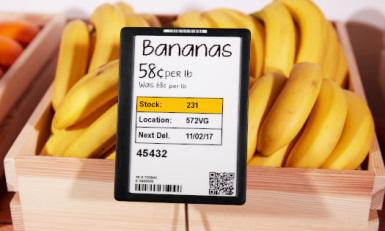How To Choose Electronic Shelf Edge Label For Your Store
 In the retailing industry, it’s not hard to understand why the Electronic Shelf Edge Label (ESL) is growing popular. It’s an ideal ticketing strategy to keep pace with rising price changes. For marketing departments in large franchises, ESL ensures that the right prices are displayed in the right place and time. Additionally, it gives your store a comparative advantage to meet the sophistication when carrying prince increases. It’s harder and costly for a large store to manually carry out daily price changes to meet your requirements. In addition, even small stores can use ESL to model their real-time data organization.
In the retailing industry, it’s not hard to understand why the Electronic Shelf Edge Label (ESL) is growing popular. It’s an ideal ticketing strategy to keep pace with rising price changes. For marketing departments in large franchises, ESL ensures that the right prices are displayed in the right place and time. Additionally, it gives your store a comparative advantage to meet the sophistication when carrying prince increases. It’s harder and costly for a large store to manually carry out daily price changes to meet your requirements. In addition, even small stores can use ESL to model their real-time data organization.Tips to help you choose ESL solution
Integration with the current ticketing system
You need a strategic ticketing solution that does more than offering promotional and pricing information. The solution must capitalize on your current ticketing system. Luckily, ESL displays are ideal in evaluating your current ticketing for a strategic system that replaces legacy systems. You have to invest in ESL displays that don’t require buying additional ticketing system to support the digital displays.
It’s advisable to use ESL that works effortlessly with your printed store promotions and tickets. Your printed tickets must complement the ESL installation through the creation of visual for shoppers. Maintaining and supporting two incompatible ticketing systems erodes the benefits of ESL. Installing appropriate ESL offers about 100 percent efficiency but you still have to print tickets during future unlikely events. This explains why you need ESL that works with your current ticketing system.
Ability to send price change acknowledgments
Your electronic shelf labels must receive and send data for pricing integrity. For a franchise, the ESL should allow the headquarters to realize the price changes received and published on the digital display. The two-way capability allows maintaining pricing integrity and compliance. This allows the smooth running of the various franchisees of your store without cheating customers.
Accommodating large volumes of price changes
Do you have a large store network? Perhaps, you’re always making multiple price changes in a short period. Then, you need ESL with appropriate transmission capacity to meet the price changes. The transmission rate varies from 1,000 changes per hours to thousands of changes per hour. This makes it very important to evaluate your store requirement to ensure your vendor can handle the volumes meeting your store requirement.
Multiple sizes
Your various sections and departments definitely require various display sizes. Therefore, it’s important to ensure that the vendor supplies multiple ticket sizes. These might include shelf edge and promotional talkers. Retail stores need various tickets with different layouts and sizes. Keep in mind that a section might require multiple layouts in a size. Ensure that the vendor manages various templates for the ESL.
Controlling pricing for individual stores
Multiple stores need ESL that controls pricing for a store while making the head office aware. Marketing requires controlling ticketing for a chain of stores but the store managers must make promotions to manage stock and support local events. This is where flexible ESL comes in handy for different franchise managers to make independent decisions. However, the franchise’s corporate marketing department must be aware of these changes for each store.
Provision of backend marketing insights
Appropriate ESL requires sufficient reporting to inform the head office of any price changes in the various stores. The ESL must detect promptly any overriding of prices and price changes implemented. You need an effective ticketing strategy that puts marketing departments in control of promotions while offering insights into ticketing implementation at the local level.
Roadmap for future developments
With dynamic technology trends, ensure to discover the vendor’ s roadmap for the future. You need an ESL solution that won’t become absolute after a few years. The vendor must have a clear plan to ensure that the product remains relevant regardless of changing technology. This requires investing in research and development to allow offering periodic system upgrades to offer more features.
Bottom line
With the retail industry operating in a highly technical and complex environment, ESL is the ideal technology to include in your store. This comes with significant productivity gains although it must resonate with your current ticketing system. With comprehensive ticketing in place, your store will enjoy seamless operations when your vendor has expertise in ticketing strategies.
Advertise on APSense
This advertising space is available.
Post Your Ad Here
Post Your Ad Here
Comments